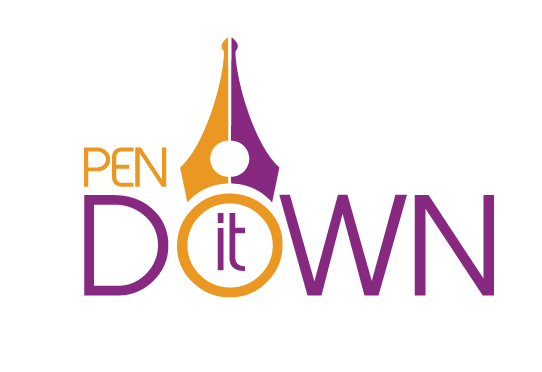Table of Contents
How to Start a Freelancing Career
The freelancing industry has enjoyed impressive growth in recent years. Becoming a freelancer enables most individuals to start earning an income from the comfort of their home, not to mention the freedom to schedule their timetables. A freelancer can offer their services on a full-time or part-time basis depending on their schedule. Here is a comprehensive guide to help you start a successful career as a freelancer. Recent statistics have shown that more than 54 million Americans are opting to start freelance careers and businesses as opposed to venturing into regular traditional jobs. Companies have also begun hiring employees on a freelance basis due to the many perks derived from this art of employment including no healthcare, lower employee-related expenses, fewer taxes, less office space, etc. The standard of living has exponentially increased. This has led to a majority of the working class looking for more feasible and realistic ways to attain a side business while still keeping their day jobs or ditching the corporate world altogether and starting a career as a freelancer. So how can one go about starting a lucrative side hustle and gradually making it your full-time career?1. Identify the purpose of becoming a freelancer and establish goals
Similar to any other big venture you dive in, deciding to become a freelancer takes a lot of planning and dedication. The first thing you need to do is set and define your goals. Perhaps you are looking for a way to earn extra money for a short duration of time, or you want to ease yourself into the freelancing world while still maintaining your daytime job as a safety net. Ask yourself:- Am I looking to earn extra income on the side?
- Do I eventually want to become a full-time freelancer and be my boss?
- Am I using freelancing as a stepping stone to achieve a different goal entirely?
- Be specific
- Income level – Everyone has a standard of living that they would like to continue to pursue. You need income to be able to sustain that lifestyle. Ask yourself what “successful” means to you in terms of money. From here, set attainable milestones and work towards achieving each milestone per its deadline. Start with your freelance income target based on your living expenses and risk tolerance. Remember to remain realistic with your expectations. If your primary purpose is to become a full-time freelancer, then you must be realistic about how long your savings can sustain you. You will also need to draw up an estimate of how many clients you will need per month and what you will charge them. All this should be done before leaving your day job.
- Clients -You cannot grow your business without new clients. Some of your goals need to focus on how you will go about acquiring new clients.
- Organization – You do not want to become a freelancer who is always behind and has to keep pushing back deadlines. Whether it’s on client projects or your administration, a last-minute rush and high-stress working environment can break your new business. You need to set some goals to quantify precisely how you are going to stay organized, how you will allocate your working hours, and how to decide who you want to work with.
- Set business policies – It might seem redundant to set a goal that is geared towards preventing you from doing something you already know is not a good idea. But ask yourself how many times you have indulged in something you know you shouldn’t have. It’s crucial to set a goal that locks you into never letting good business practices slide.
- Give back – If you are looking for support from a community, then you must support your community as well. Allot at least one thing related to doing something good for a cause, an individual, an organization, or a non-profit that you believe in.
- Write down your goals
- Push yourself
2. Select your niche
A freelance niche refers to a section of the market that buys freelance services. Finding your niche is the act of narrowing down the segment of the service(s) that you offer down to a very particular target. There are hundreds of different types of freelancing jobs available. The problem is, with the majority of the working class looking to venture into freelancing, the platforms to find clients who will pay well for your services are diminishing. There are two ways to niche your services:- Vertical segment
- Horizontal segment
- Your skills – What are your strengths? What are the areas of work that you get the most commendations for? For example, if you are a writer, are you particularly skilled in content writing, editing, ghostwriting, academic writing, or copywriting? Identifying this will give you a solid idea of where your expertise lies.
- Your passion – What types of work/projects give you the most satisfaction and make you lose track of time? What projects drain your enthusiasm and energy? Identifying your passion within your generalist area will help you narrow down to your preferred niche. A big part of becoming successful in the freelance business is to enjoy what you do. This will in turn lead you to produce quality work and build your reputation. Satisfied clients you can use as referrals make up a big part of a successful freelance business.
- Market viability – Is there any evidence that people are in need and are willing to pay for the services you are planning to offer? One simple and quick way to find this out is to use relevant keywords related to your niche and search for jobs posted on freelance sites such as Freelancer.com, Hirewriters.com, or Upwork.com among others. Do you see many job postings with decent pay?
3. Set your prices
You need to set prices for your services beforehand. Figuring out how to establish your freelancing prices can be tough, especially if you are just starting. Many of us opt to start freelancing because of the flexible schedules and the creative freedom. However, the business cannot be sustained if it’s not profitable. The shift from earning a predictable income to setting your rates can be difficult when there’s no guideline as to what you can and should make. So how do you choose your price rate? You do not want to offer your services at low rates nor do you want to set them too high and alienate potential clients especially when starting. If you place your prices too low, you risk:- Undervaluing the quality of your work
- Damaging your credibility as an expert in your field
- Hurting the reputation of your industry
- Have a hard time attracting your ideal clients who are not within your budget
- Have a hard time retaining and converting one-time clients into long-term clients
- Factor in your freelance business expenses
- Know the average rates of your industry
- Understand your expertise
- Project-based rates or hourly rates
- You can charge different rates to different clients
- There’s more incentive to increase your productivity
- You will be more focused on the quality of the final project and less on amount of hours
- You get to price your final service based on value
- It’s easier to work with a client’s budget without having to worry about hours
- You will be quoting a higher amount which might push some potential clients away
- The high amount may feel like a big investment upfront for clients
- You might not get paid for the extra hours you put into the project beyond what you had estimated
- It’s a good way to test your relationship with a new client before taking on larger projects from them
- You get paid for extra hours
- The rate will seem relatively small to clients as opposed to project-based rates
- It’s ideal for clients who do not have any set project goals or a timeline
- It’s harder to scope what a client is willing to pay for projects
- Your earning potential is limited
- It can be harder to predict work and block off time in your calendar
- How much do you want to earn this year?
- How much do you want to work?
- 3. Base your prices on income goals and work hours
- What do I do if a client wants to negotiate my rates?
- Will you be able to add that project to your portfolio proudly?
- Does that company or brand give you a certain level of credibility in your field?
- Is it a brand or company that you have always wanted to work with?
- Have you worked with that client before? If yes, did you have a positive working relationship?
4. Identify your target clients
One of the toughest things about freelancing is getting clients. In the beginning, it might feel like you are spending most of your time client-hunting. You do not have to spend money on advertising campaigns to get clients. Below are some cheap and easy strategies one can use to grow their client database:- Word of mouth
- Have an updated portfolio
- Graphicartistsguild.org
- Sortfolio.com
- Coroflot.com
- Use social media sites
- Network and Co-work
- Relevant Facebook pages
- LinkedIn groups
- Quora
- GrowthHackers, and so much more
5. Design a high-quality website
The first thing a potential client will do is research your company to gather more information. Many new business owners tend to cut corners when it comes to creating their websites. Some individuals use poorly lit images, unprofessional content, unfriendly page interface, etc. It is rare to find a startup that does not want to increase traffic to their website. However, many new entrepreneurs are baffled when they realize people are not clicking on their sites to view their services. The answer is simple; many potential clients will move on to another website if they feel your site is hard to navigate, looks cheaply designed, or it contains uninformative content. Your website should be sleek, include useful information, and great graphics, and have high-quality images that highlight what’s being offered. Your site should include a freelance portfolio to sell your services effectively. The collection should:- Highlight your skills, education, and accomplishments
- Display sample works and communicate your specialty
- Display testimonials
- List your contact information
- Be regularly updated
- Create a Blogging Section
- One Page Site or Multiple Page Site
- Include FAQ Page in Top Menu
- Relieve some burden on customer support by publicly answering common questions
- Improve SEO and site navigation
- Earn trust by demonstrating your expertise in your field
- How Responsive is your website?
6. Create a blog section
A blog provides you with an easy-to-use platform where you can promote your business. Starting a blog also provides a more natural way to share your ideas and expertise with the outside world and market your services. A few years back, starting blogs required immense coding skills; however, creating blogs in 2018 is easier than ever. Here are some additional guidelines to enable you to start your blog effortlessly: Step 1: Choose the correct platform for your blog website Many people opt to use WordPress as it is good for starters who are creating their first website. This platform has considerable scalability and works pretty well with low and medium-traffic websites. The other two options that lag behind WordPress are Joomla and Drupal. WordPress is easy to install and has an active community. It’s also ideal for anyone who is not technologically advanced – you will have access to plug-ins that are relatively straightforward and intuitive to use. Why WordPress?- It’s free – you will only need a domain name and web host
- Its support forum is beneficial
- It offers 45k+ free plugins to help your account run more efficiently
- There are 5k+ free and paid WordPress themes available
- It affects your ranking in search engines
- It defines your brand
- It’s the first impression your site visitors will see
- You will get a free domain name
- They have a one-click WordPress installation
- They have 24/7 support
- They offer a money-back guarantee
- Sign up with Bluehost.com or GoDaddy.com
- Choose the best hosting page. We would recommend that you use a starter package as it offers plenty of speed, storage, performance, and functionality to your first website. You can always upgrade your hosting plan as your site grows.
- Next, choose a domain name. Remember to double-check your name to avoid any typos
- Enter your personal information and credit card details and finally complete the payment
- Go back to the administration panel and look for the option “Install WordPress.”
- Click and proceed with the installation
- Now, select whether you want your webpage with or without “www” at the beginning of your web name. i.e., do you prefer www.YourWebsite.com or YourWebsite.com?
- Now tick all necessary conditions under the license agreement and click install
- Once the installation is complete, you will see a button that says “Your installation is complete” and another “View Credentials.”
- Click on View Credentials to get your login credentials
- And that’s it! Now you can log in to your webpage by clicking the link that says YourWebsiteName.com/wp-admin.
7. Build an online community
A community provides a platform where you can interact with like-minded individuals and share information regarding your similar interests. Online communities for businesses are becoming increasingly popular with every entrepreneur trying to build a vibrant online community for their business. Studies have shown that businesses with active communities primarily focused on their products and customers, enjoy higher customer loyalty and brand credibility. But how do you start and maintain a community for your business? Here, we have gathered eight tips that will show you how to build an online community for your business. These steps are relatively simple but implementing them will require effort and consistency from your end. Here are our top 8 tips for building a robust online community.- Create value
- Keep your content consistent
- Allow for sharing
- Be active on social media
- Show you care
- Give credit where credit is due
- Incorporate other peoples work into your community
- Learn, Learn, Learn
8. Learn how to pitch
You are likely going to have a hard time making a name for yourself in the beginning. Pitching is a skill that will be handy for years to come. No matter how qualified you are, you need to be able to effectively communicate your strengths and convert your communications with individuals into paying clients. Here are a few basics to implement for your pitch to be successful:- Sell your strengths
- Use visual graphics, images, and video aids in the layout of your proposal
- Anticipate beforehand and answer any questions that might come up
- Show you have done your homework by creating a strong entrance pitch email
- Use relevant work samples and past projects to demonstrate your expertise
9. Set up financial processes
Before you attain a lot of clients, ensure that you are entirely prepared for it. You need to create a template for invoices, set prices, and keep in mind how much you need to set aside for taxes. In short, design an excellent accounting plan. It’s easier to keep your finances in check from the start as opposed to messing things up and then beginning to keep records. This haphazardness might end up costing you. The one investment freelancers neglect the most – the first impression Many individuals seem to neglect one of the most important investments when it comes to selling their startup to the world. As the saying goes, “The first impression is primal.” Most of us are working on a tight budget when starting a freelancing business. It is not uncommon to find an entrepreneur looking for ways to cut back on their spending. One of the most neglected investments is sadly the first impression – namely the overall design of your brand. What are first impressions? How many times have you seen an entrepreneur/ freelancer cut back on how much they spend on their business cards, their logo, or even their website’s interface? Most individuals start up and promise themselves that they will “upgrade” these poorly executed designs when the money starts coming in. This is a bad idea. Consider this, what motivates you to click on a webpage or be interested in a particular service/product from an unknown startup? Is it not the first impression? Is it not how well designed their logo, website, etc. are executed? Would you be more inclined to request a service from a startup that has cheap and imperfect business cards or would you instead opt for services from an individual who has a sleek and sophisticated-looking website? These might seem like straightforward and unimportant aspects to take into consideration to an entrepreneur seeing that they are more worried about staying afloat and breaking through ASAP. However, research has shown that more customers are inclined to click or call a specific freelance business and request for their services based on their brand’s overall design. In the freelancing industry, the overall design is the best way for a new company to separate itself from all the clutter and attract the attention of its target market.- Business Cards
- Logo
- Website





